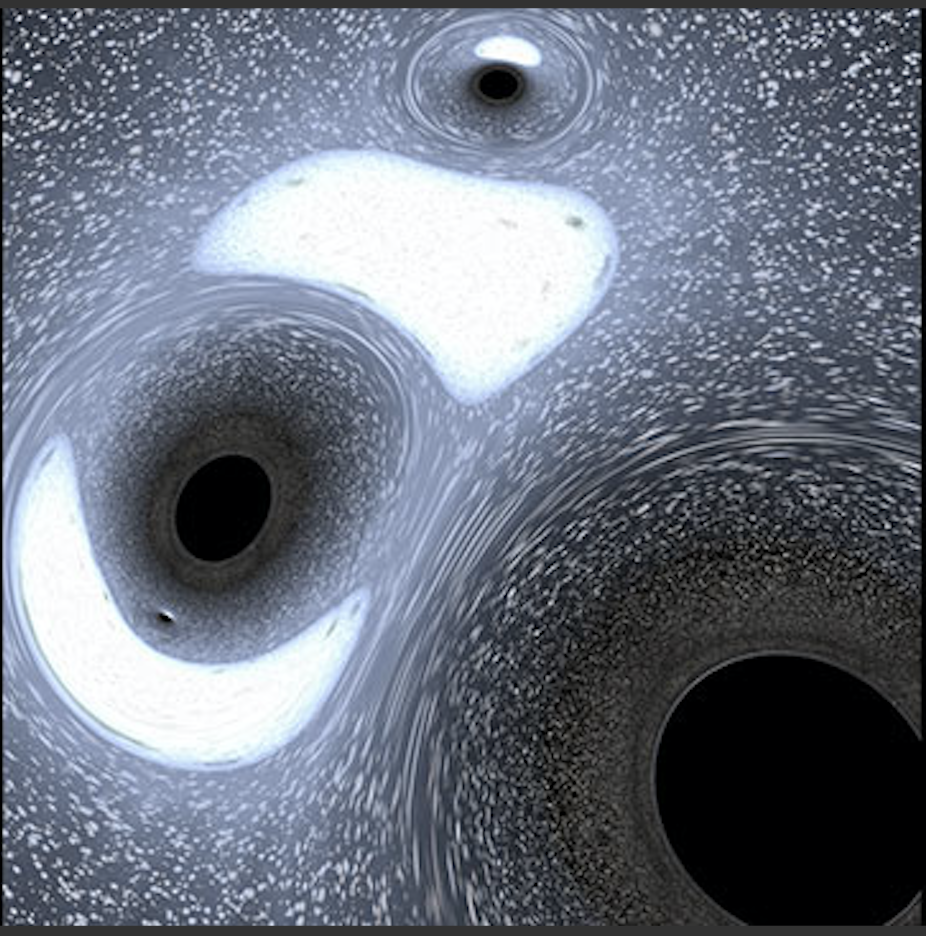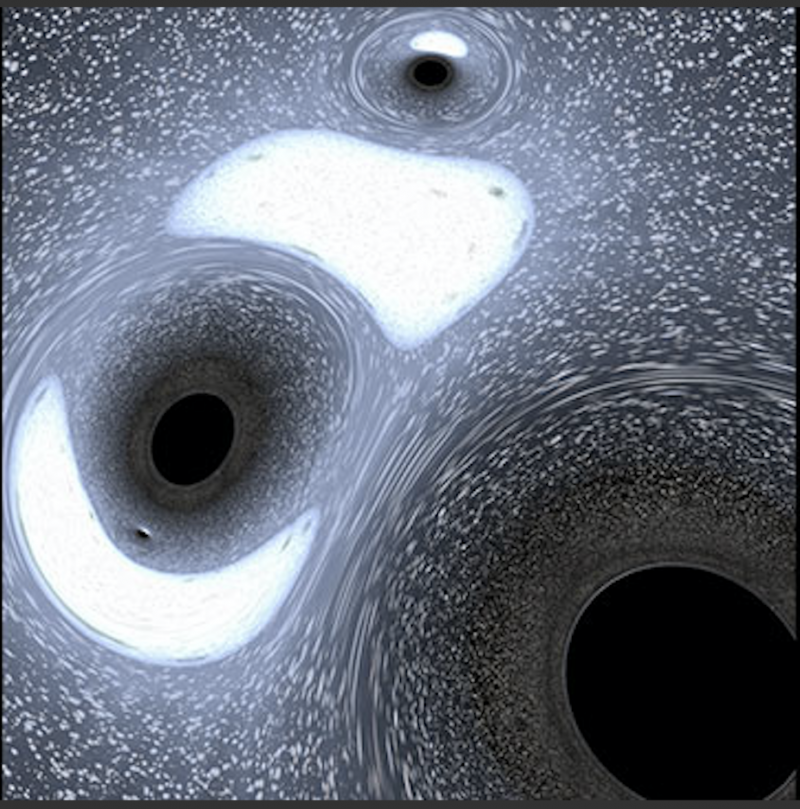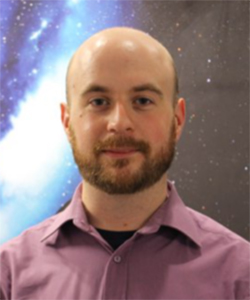

Wow! Nature photographers sometimes capture lightning sprites in Earth’s atmosphere. The illustration above is an artist’s concept of a lightning sprite in Jupiter’s atmosphere, based on findings from the Juno spacecraft, which is orbiting Jupiter now. Scientists believe that, on Jupiter, sprites are likely blue in color, instead of red as in Earth’s atmosphere. Image via Aaron M. Geller/ Northwestern.
After several months of analysis, scientists working with the LIGO and the Virgo collaborations – two large-scale physics experiments and observatories designed to detect cosmic gravitational waves – have released their second catalog of detections. The catalog is known as GWTC-2. It contains 39 new signals from black hole or neutron star collisions – mighty cosmic events during which gravitational waves are released – detected between April 1, 2019 and October 1, 2019. The signals more than triple the number of confirmed detections of gravitational waves, which constitute a brand-new tool for astronomers: a new way of probing the universe. Scientists at Northwestern University in Evanston, Illinois – who participated in this research – called the newly released work “the most detailed family portrait of black holes to date.” They said it offers new clues as to how black holes form and once again confirmed Albert Einstein’s theory of general relativity, via multiple tests.
LIGO said in a statement:
The new [updated catalog] includes some of the most interesting systems we have seen so far, and enables qualitatively new studies of astrophysical populations and fundamental physics.
The scientists at Northwestern said:
The observations could be a key piece in solving the many mysteries of exactly how binary stars interact. A better understanding of how binary stars evolve has consequences across astronomy, from exoplanets to galaxy formation.
Scientific details are reported in a trio of related papers which became available in pre-print on October 28 at arxiv.org. The studies also are being submitted to peer-reviewed journals. You’ll find links to the pre-prints, and descriptions of the papers, below.
Read more: What are gravitational waves?

Astrophysicist Christopher Berry, via Via Northwestern.
LIGO consists of a pair of identical, 4-kilometer-long interferometers in the United States, and Virgo, a 3-kilometer-long detector in Italy. The instruments can detect gravitational-wave signals from many sources, including colliding black holes and colliding neutron stars.
The papers are summarized as follows:
What these scientists are calling “the populations paper” is titled Population properties of compact objects from the second LIGO–Virgo Gravitational-Wave Transient Catalog. The Northwestern statement explained that in this paper:
… the researchers reconstructed the distribution of masses and spins of the black hole population and estimated the merger rate for binary neutron stars. The results will help scientists understand the detailed astrophysical processes which shape how these systems form. This improved understanding of the mass distribution of black holes and knowing that black hole spins can be misaligned suggests there could be multiple ways for binary black holes to form.
The catalog paper is titled GWTC-2: Compact Binary Coalescences Observed by LIGO and Virgo During the First Half of the Third Observing Run. The Northwestern statement said:
The ‘catalog paper’ details the detections of black holes and neutron stars from [the first half of the third observing run], bringing the total number of detection candidates for that period to 39. This number vastly exceeds detections from the first two observing runs … Previously announced detections from [this observing run] include a mystery object in the mass gap (GW190814) and the first-of-its-kind intermediate mass black hole (GW190521).
The paper concerned with tests of general relativity is titled Tests of General Relativity with Binary Black Holes from the second LIGO–Virgo. The Northwestern statement explained that:
… the authors placed constraints on Einstein’s theory of general relativity. The theory passed with flying colors, and they updated their best measurements on potential modifications.
Christopher Berry of Northwestern is an LSC member and author on the papers. He commented:
Gravitational-wave astronomy is revolutionary — revealing to us the hidden lives of black holes and neutron stars. In just five years we have gone from not knowing that binary black holes exist to having a catalog of over 40. The third observing run has yielded more discoveries than ever before. Combining them with earlier discoveries paints a beautiful picture of the universe’s rich variety of binaries.

The 2nd catalog of gravitational wave events “GWTC-2”, was published October 28, 2020. Since September 2015, LIGO/Virgo have detected 50 gravitational waves, including the 39 new ones details in the 2nd catalog. This graphic illustrates the current total number and masses of LIGO/Virgo black hole and neutron star merger events (in blue) compared with previously known black holes (in purple). Mergers are indicated by arrows connecting 2 progenitor objects with a final merged object of higher mass. Image via LIGO-Virgo / Northwestern / Frank Elavsky & Aaron Geller.
Bottom line: Scientists working with the LIGO and the Virgo collaborations – two large-scale physics experiments and observatories designed to detect cosmic gravitational waves – have released their second catalog of detections. The new catalog 39 new signals from black hole or neutron star collisions.
Read more: What are black holes?
Read more: What are neutron stars?
Source:
https://earthsky.org/todays-image/ligo-virgo-new-catalog-gwtc-2-black-hole-family-portrait